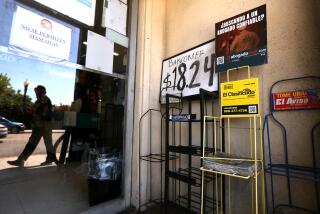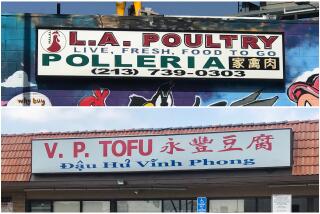Street-Sign Cosmopolitanism
- Share via
The 1990 census found that 86.2% of Americans said they spoke only English. That linguistic limitation contrasts notably with the Netherlands, for instance, where second-language instruction starts in first grade and 80% of the people say they speak English as well as Dutch.
The prevalence of English monolingualism in America is understandable, since English is fast becoming the world’s language. But just as America exports its language, it imports people from all over the world. Nowhere is this transformation more evident than in California. Other languages are flourishing in the streets of Los Angeles, San Diego, Santa Ana and elsewhere. Sounds and signs in Spanish, Korean, Tagalog, Japanese, Chinese, Vietnamese and Armenian float under the California sun. While some may find this troubling, we think it enriches our daily lives.
This week, The Times reported that the Spanish tilde, the sinuous mark over an N that turns its sound to “nya,” has been restored to some Studio City streets, conforming signs with proper Spanish usage. Now, the street named Dona Alicia won’t be confused with a simple dona, or doughnut. The Spanish-born executive who crusaded for the tilde says “the whole issue of the N is to recognize our past.”
While it is true that Spanish was spoken here well before English, that is not the only reason to celebrate the restoration of the N to the city’s streets. It is an acknowledgement of the multiple languages spoken in California and a confident acceptance of all they have to offer to the ongoing enrichment of English.
More to Read
Sign up for Essential California
The most important California stories and recommendations in your inbox every morning.
You may occasionally receive promotional content from the Los Angeles Times.









